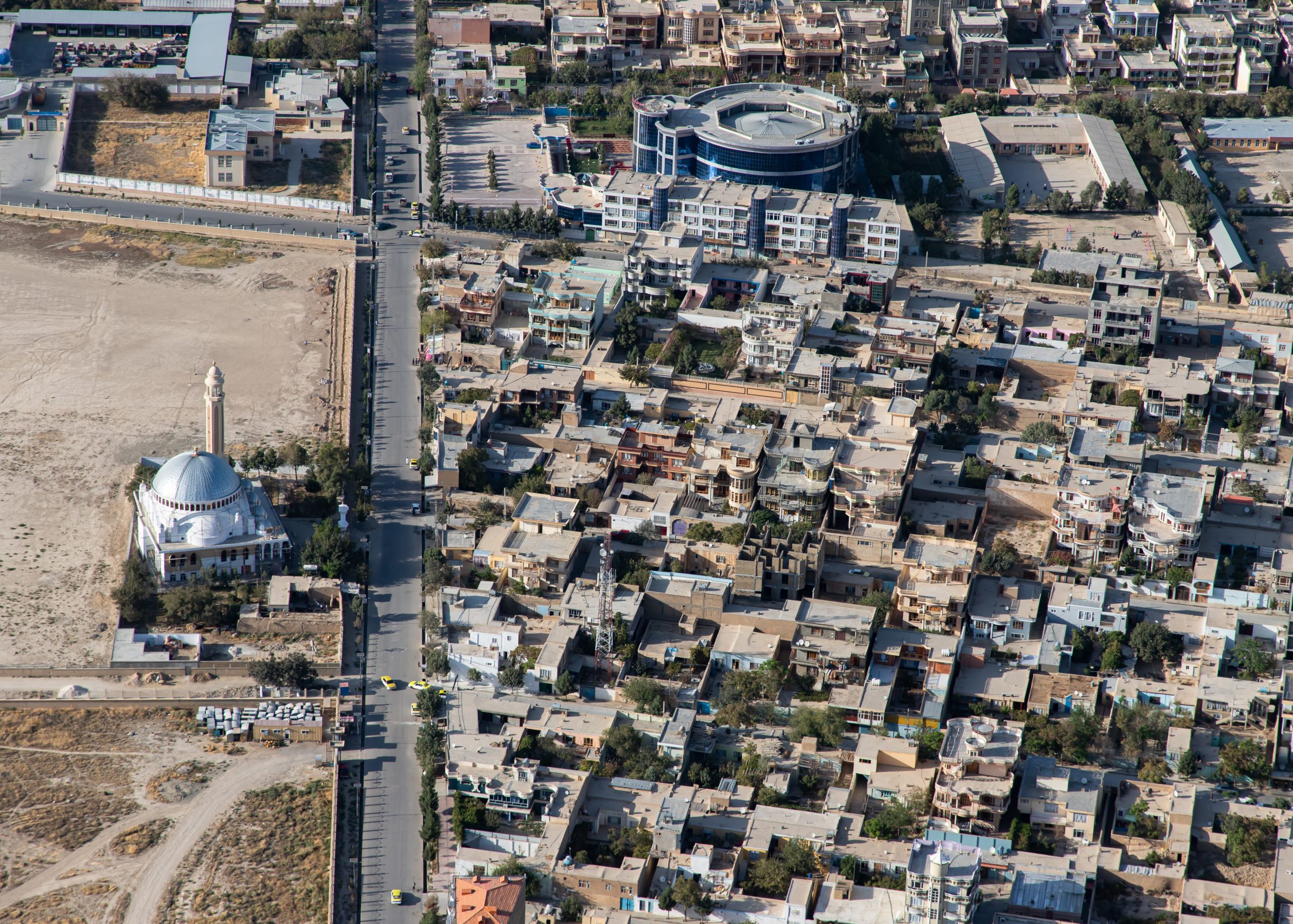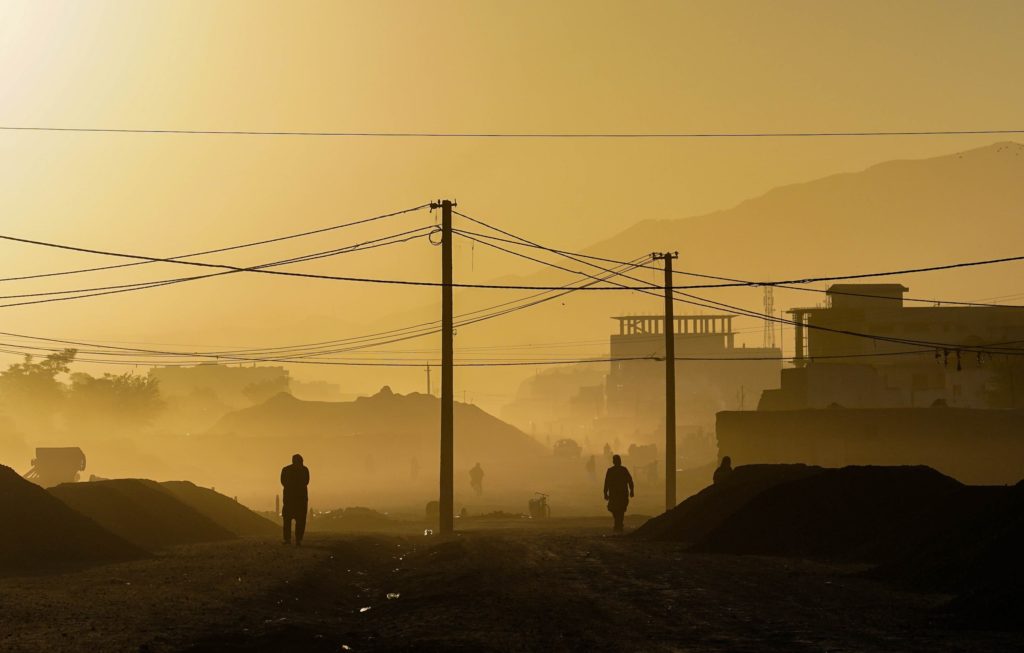
Religious Minorities and Religious Freedom At Home — and in Afghanistan
M. Christian Green
Photo by Marko Beljan on Unsplash.
Over the last three decades of work in the fields of law, religion, and human rights, I have been privileged to work with fellow scholars with a range of views on what is known in the United States as “religious freedom.” In my work with scholars outside the U.S., I have also been schooled in the necessity of framing this concept in the more generous terms of “freedom of religion or belief.” Professors Winnifred Fallers Sullivan and Elizabeth Shakman Hurd, two of my most frequent scholarly interlocutors over the last decade and a half, have, along with the many scholars they have assembled in their various projects on the politics of religious freedom, provided some of the most trenchant critiques of that concept. At times, motivated by my own concerns about religion and human rights, I have been gently critical of their analysis of religious freedom — but really as a mostly friendly critic. I do remain convinced that there are instances of bona fide violations of religious freedom qua religious freedom in the world, both historically and today, as well as violations of the core beliefs and values of people who hold a range of dissenting, divergent, or non-religious views about “ultimate concerns.”
In 2015, a year that now seems pivotal for my own thinking about “religious human rights” and “religious freedom,” I was concerned about the apparent religious radicalization of young men and women from around the world that led them to be “foreign fighters” with ISIS — however little they actually knew about the Islam they were invoking. Alongside women’s human rights advocates as well as religious freedom advocates worldwide, I was also concerned in 2015 about the plight of Yezidis, particularly Yezidi women being sold into sex slavery, in Syria. And again, in 2015, I was concerned by the political crisis in the Central African Republic and how quickly the conflict became “religionized.” While religion and religious freedom were far from the only issues at stake in these various conflicts, their importance could not be denied.
What effect will simply removing religious minorities from Afghanistan have on the Taliban regime?
As the 2010s drew to a close, my research honed in on the global plight of religious minorities — not as religious, but as minorities. This seemed to be a way around the specifically religious dimensions of the problem, which often involved government definitions of religion and the parsing of religious beliefs and practices. It seemed to be a way of framing the issue more as a matter of equality, nondiscrimination, and pluralism. Put simply, it was a view that societies should be judged by how well they treat all minority groups — whether identified by religion or belief, gender, ethnicity, sexual orientation and gender identity, or any other marker of identity. Those who are minorities on whatever basis should be accorded full dignity, respect, socioeconomic opportunity, and equality under the law by the majority in any civilized society. Minorities should not have to be martyrs.
Against this backdrop, a recent invocation of religious freedom in the current crisis in Afghanistan by the United States Commission for International Religious Freedom (USCIRF) has prompted me to appreciate further the broader call for equality, nondiscrimination, and religious pluralism that Sullivan and Hurd and their colleagues have been aiming at in their critique of religious freedom. As Hurd put it in a recent editorial: “The best way to support religious tolerance abroad is to step back from religious freedom as a guiding principle in favor of justice, equality and respect for diversity.” In an earlier editorial from 2013, Hurd similarly observed:
To elevate a concern for what is named as religion above other affiliations is a risky proposition in U.S. foreign policy. The goal should be to see individuals in civic terms. The State Department would do more to help the Rohingya, Copts, Alawites, and others by insisting on equality before the law. The Rohingya are not excluded solely with religious slurs, but with racist and other dehumanizing terms. Monks leading the charge to democratize Myanmar have turned against them, blocking humanitarian assistance and calling for their social and political exclusion.
This focus on civic identity rather than religious identity, on pluralism and diversity of beliefs, and the necessity of equality under the law, is a constructive approach. It should have been more salient in the Syrian refugee crisis under ISIS in 2015, and it deserves serious consideration in what seems likely to become an Afghan refugee crisis in 2021.
This realization came to me as I was considering the recent press release titled “USCIRF Calls on U.S. Government to Include Religious Minority Communities in Afghanistan in Evacuations.” My initial, gut-level response was, “Really? We’re just going to airlift them out?” There are clearly many Afghans to whom the U.S., no doubt, owes both a contractual and moral duty of evacuation. These are Afghan citizens who provided direct services to the U.S. in its two decades of military involvement in the country. But in proposing religious evacuation, the language of the USCIRF press release vacillates between referencing the evacuation needs of “religious minorities” and “non-Muslims.” (The reference to “non-Muslims” in the initial August 20 press release was redacted from a subsequent revision released August 23.) This casts the problem squarely in religious terms, making it seem as if Islam itself, rather than the Taliban’s harsh and brutal interpretation of it, is the problem. This response is at once underinclusive and overinclusive. It is underinclusive in failing to take into account the situation of Afghanistan’s Muslim minorities, particularly the Shia, who have experienced persecution by the Taliban in the past and may fear its recurrence in Afghanistan’s now uncertain future. It is overinclusive in assuming that all “non-Muslims” wish to flee rather than remaining in a land that has been their home for centuries and generations, provided that their religious freedom can be secured. Moreover, what does it mean, as a policy response, to advocate for the evacuation of religious minority groups from a land that has been their home? Isn’t this a failure of religious freedom advocacy?
This casts the problem squarely in religious terms, making it seem as if Islam itself, rather than the Taliban’s harsh and brutal interpretation of it, is the problem.
Religious minorities are, in fact, a miniscule portion of the Afghan population. An estimated 99.7% of Afghans are Muslim; 90% of these are Sunni Muslim. Hardly a portrait of religious pluralism, as recent USCIRF programming on the plight of Afghanistan’s Hindu and Sikh communities attest. But for a few hardy families in some towns, being supported largely by remittances from the post-1996 Afghan diaspora community, Afghanistan is a religious monoculture. It might actually be possible to evacuate all “non-Muslims” from Afghanistan. After all, there is precedent for this in the recent Syrian exodus. Many Christians have lamented the near disappearance of Christians from Syria and Iraq, where some of the earliest and, for centuries, some of the most vibrant Christian communities among religiously diverse populations in their own and neighboring lands are located. It might be possible to evacuate them, but would it be good?
Many, though not all, communities in the U.S. accepted both Christians and Muslims who wanted to resettle to the U.S. from Syria after the ISIS takeover, and some of them had taken in Kurdish refugees from Iraq before that and Chaldean Christians from Iraq before that. Religious groups in the U.S. are said to be gearing up to aid refugees from Afghanistan in the coming weeks and months. It is great that the U.S. has been able to welcome these communities, but it also raises the haunting question of what would have happened if they had stayed — and what was lost in their departure. What would have happened if the Kurds were better supported politically in remaining in their own land, rather than being militarily supported and then too precipitously dropped, as we seem to be seeing in the Afghanistan pullout? Would we even have had an ISIS with more ethnically and religiously diverse populations in Syria and Iraq? We welcomed the Kurds, Yezidis, and religious and ethnic minorities from other distressed and conflict-ridden nations, and we will likely welcome many from Afghanistan. But shouldn’t they have been entitled to flourishing lives in their own countries, especially after decades of nation building and religious freedom advocacy?

The current concern of USCIRF for “non-Muslims” in Afghanistan also seems at odds with its posturing on the Muslim Rohingya in Myanmar in recent years, particularly with Myanmar’s recent descent into military autocratic rule. USCIRF commissioners and other U.S. government officials have paid lip service to the “Rohingya! Rohingya! Rohingya!” in annual press releases and at conferences around the world in recent years, but the U.S. has accepted only a few thousand Rohingya refugees under former-President Trump’s starkly reduced refugee resettlement program, and even that has reportedly been only hush hush and on the down low. Of course, Trump’s “Muslim travel ban” was likely a complicating factor, and the human rights affronts of the Myanmar coup also seem to have been largely trumped by the COVID pandemic as a matter of international attention. The different treatment apparently being proposed for the “non-Muslims” in Afghanistan in comparison to that given to Rohingya Muslims in Myanmar raises concerns about religious bias and marginalization of the religious freedom of Muslim groups.
A further oddity is that all of this is happening at a time when the concept of religious freedom has undergone hypertrophy in American jurisprudence, such that religious groups in the U.S. can now do just about anything they want under the rationale of religious freedom — from discriminating against employees with health problems, to accessing public funds for education, to defying public health mandates and engaging in precaution-free mass worship in a pandemic — is causing some to express concerns about the apparent demise of the principle of disestablishment in the American law of religion and state. But having established religious freedom as the problem and “non-Muslim” minorities as the targets in Afghanistan, the solution proposed now seems to be one to cut and run. Rather than assigning strict liability to the Taliban for any human rights violations they might perpetrate, we are telling those who remain that they assume the risk. The only remaining option for “non-Muslims” to leave the country or face the persecutory consequences.
We welcomed the Kurds, Yezidis, and religious and ethnic minorities from other distressed and conflict-ridden nations, and we will likely welcome many from Afghanistan. But shouldn’t they have been entitled to flourishing lives in their own countries, especially after decades of nation building and religious freedom advocacy?
Humane and civilized nations should always seek to provide refuge for those fleeing persecution of a range of kinds. Those fleeing persecution to protect their human rights — and often their very lives — should be given every opportunity to petition for asylum and resettlement in countries that can receive them. But what effect will simply removing religious minorities from Afghanistan have on the Taliban regime? Will the Taliban be absolved from the responsibility to respect the human rights of all on Afghan soil, thereby achieving uncontested religious theocracy and hegemony? Will the Taliban have no pressure put on them to respect the rights of people of every religion, gender, ethnicity, or sexual orientation, and other identity? Why should the rights of religious minorities be preferred over those threatened for non-religious reasons, including government workers who supported the overthrown regime, advocates for political and human rights and the rights of women and girls, and other groups who may not be religiously defined but who may be even more immediately at risk than religious minorities? Is airlifting religious diversity out of Afghanistan the best policy, or would the U.S. be aiding and abetting the work of the Taliban in eradicating religious pluralism?
We do not yet know how long the Taliban government will last in its current form. Afghanistan has withstood centuries of foreign takeovers and imperial initiatives, and while the Taliban may have outlasted two decades of U.S.-led international occupation, they may find governing in a modern, technological age to be beyond their ken. It seems clear that any robust notion of religious freedom must require protection of religious minorities, but it is far from clear that establishing religious freedom as the problem and evacuating religious minorities from Afghanistan is the way to do that. As Sullivan, Hurd, and their colleagues have cautioned in their work, sometimes casting conflicts in religious terms can become a self-fulfilling prophecy. The U.S. could be putting a target on the back of religious minorities in Afghanistan. Religious minorities who have remained in Afghanistan since 1996 may have important reasons for doing so, perhaps connected to dreams of real religious pluralism and religious freedom if their diaspora relatives are ever able to return. Maybe it would be better to stand up to the authoritarians in Afghanistan and elsewhere by demanding that they protect religious and other civic minorities in their lands and not force people to give up their homes for their freedom. Perhaps religious freedom should be for everyone, everywhere. ♦

M. Christian Green is a senior editor and senior researcher at the Center for the Study of Law and Religion. Her areas of scholarly expertise are law, religion, human rights, and global ethics.
Recommended Citation
Green, M. Christian. “Religious Minorities and Religious Freedom At Home — and in Afghanistan.” Canopy Forum, September 2, 2021. https://canopyforum.org/2021/09/02/religious-minorities-and-religious-freedom-at-home-and-in-afghanistan/

